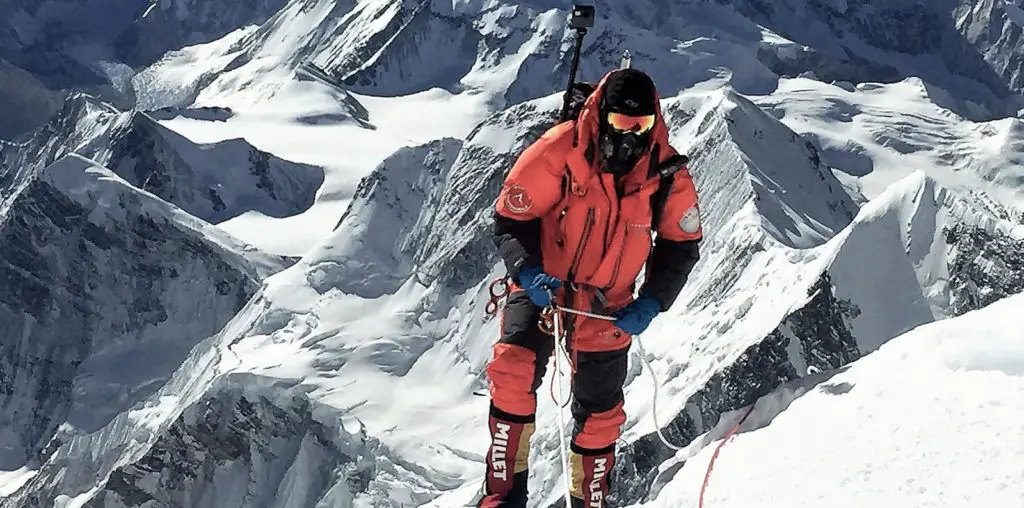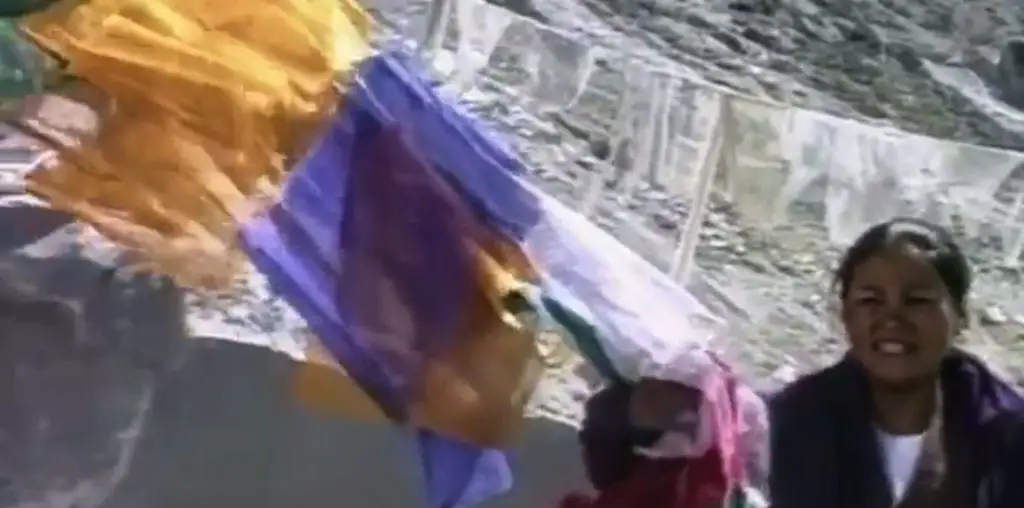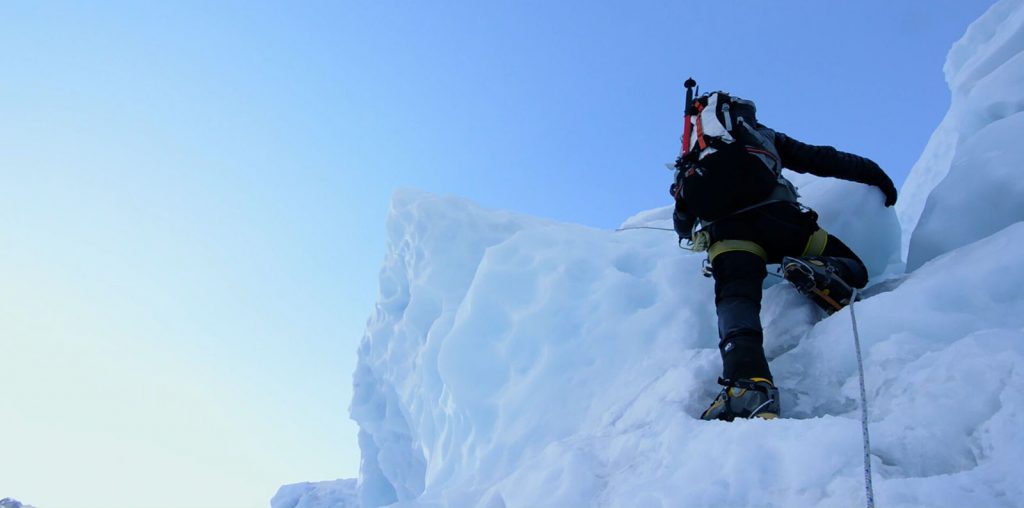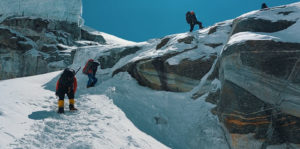
The experience of mountaineering, especially in the Himalayas, is an actual test of humans versus nature. So, as the saying goes, why go to the top of the world’s highest peaks? Because it’s there. In writer-director Octavian Repede’s short documentary Voyage to Himalaya – The Kangchenjunga Expedition 2022, Romanian mountaineers Catalin Mastan and co-writer Teodor Tulpan decide to conquer Kangchenjunga. The mountain is the world’s third-highest peak at 28,169 feet, with only Everest and K2 rising above it.
Kangchenjunga is less well-known than its more prestigious, famous, and higher neighbors, but it is just as big a challenge, if not more, because so few have chosen to ascend it. Nepal, India, Bhutan, and China share the mountain’s “transboundary” landscape, and many routes have been tried when available. So as Mastan and Tulpan commence their Kangchenjunga Expedition 2022 from Katmandu, Nepal, in a four-star hotel with their fellow climbers, it’s a celebration.
As they make their way, the ascension becomes real in Kangchenjunga Himal through the greenery and rhododendrons, gaining altitude by crossing numerous swaying bridges. A bevy of sherpas has set up base camps to fully accommodate the climbers and help each one on this trip, mainly led by John Gill, to reach the summit and stay healthy. Throughout the expedition, Tulpan keeps a video diary, and we learn firsthand about the challenges and grit it takes to make it to the summit.
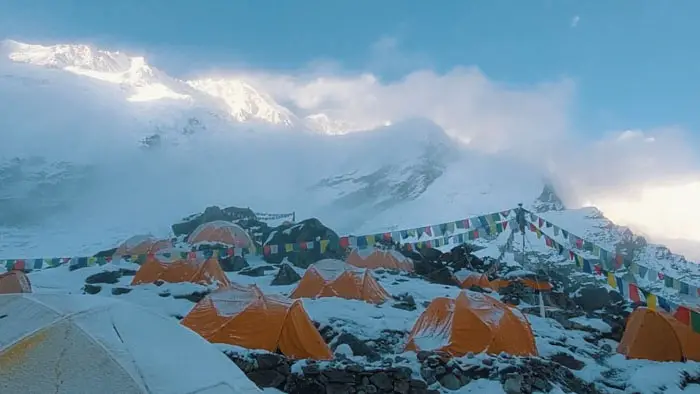
“…a climber says Kangchenjunga was a challenge he would never do again…”
Voyage to Himalaya – The Kangchenjunga Expedition 2022 explores much of the folklore, myths, and spiritual traditions surrounding the Himalayans, especially among those who inhabit this area. They speak of the “Kangchenjunga Demon,” a type of yeti, and according to an early British geological expedition in 1925, a bipedal creature was spotted. Ceremonies and tea ensue as the journey reaches several basecamps to climatize and prepare for a summit. At times the weather is atrocious with pounding snow, and then there are times when Tulpan describes how warm it is. From the onset, the film sets the tone that Kangchenjunga is a tedious effort, much like its pronunciation.
For the incredible effort to capture this journey, the place, and the challenge especially knowing there are those along the way to film it, there is a bizarre choice of narration by two people whose voices sound like AI moderators leaving the viewer detached from the documentary. It’s almost a disservice for a notable film for those who enjoy mountaineering, whether close up or from afar. Still, the filmmakers capture Kangchenjunga exquisitely.
It exists in such an overwhelming environment, yet it is so very neutral that the only color is the clothing people wear, which is why the choice of narration is so baffling. In this bleak environment, a connection is needed. However, some mood music and sounds add to the thrill and anxiety of the climb. For example, Tulpan’s descriptions of being cold and his severe painful cough make you wince. During the opening, a climber says Kangchenjunga was a challenge he would never do again — this certainly sets a tone.
Yet, the Sherpas, a unique and robust group, are the backbone of this expedition and create a deluxe camp experience for all. However, accidents happen, and helicopters come in and out to remove those who have had near-death experiences as they live in the “death zone” once they are at the several base camps set up to assist in a summit. An expedition member has a blind moment after being hit in the eye by an ice pellet after summiting, which was an interesting visual added to the film. Unfortunately, not everyone can summit Kangchenjunga, but the journey of Voyage to Himalaya – The Kangchenjunga Expedition 2022 is worth knowing.
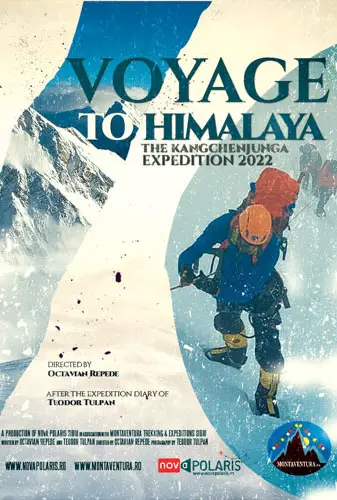
"…Tulpan's descriptions of being cold and his severe painful cough make you wince."
